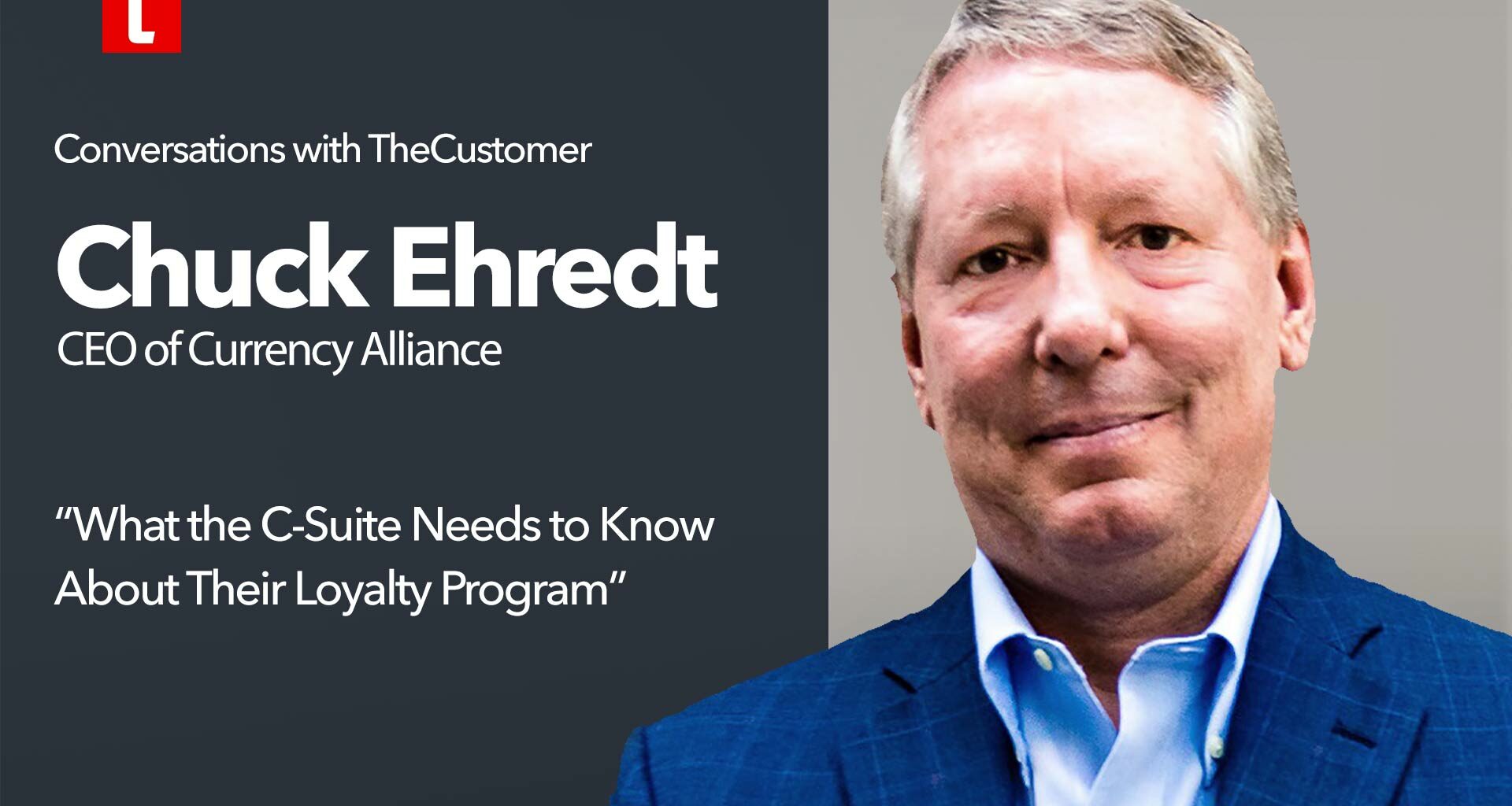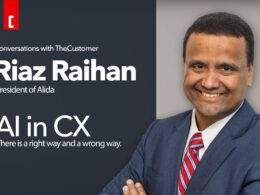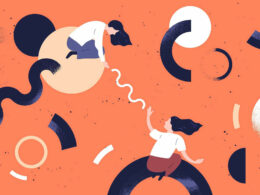What should you be asking of your Loyalty Program?
Chuck Ehredt, CEO of Currency Alliance, came into the loyalty world through the side-door of fintech and, because of that, has a different worldview than a lot of loyalty practitioners we talk to. Several weeks prior to this interview Chuck and I were discussing, among other things, his perspective on loyalty performance and what he thought loyalty programs should be capable of. Getting to those kinds of bottom line improvements is often more than a matter program tweaks and can require some significant shifts in thinking at the C-Suite level. In this conversation Chuck talks about his mission to get C-level executives to start asking the hard questions of their loyalty program.
Conversations with TheCustomer – Chuck Ehredt, CEO of Currency Alliance from TheCustomer on Vimeo.
Below is a transcript of our conversation, edited for grammar and space.
TheCustomer
Hi, I’m Mike Giambattista, I’m publisher of TheCustomer and today I’m with a friend and colleague, Chuck Ehredt, who’s the CEO of Currency Alliance, which has been variously described as the plumbing for the new loyalty model. But I’ll let Chuck describe that a in little more in detail. Chuck, thanks for joining me.
Chuck Ehredt
Oh, it’s been my pleasure. Yeah, I got into this industry about five years ago based on one observation, which led me quickly to another. The first observation was that business travelers were benefiting nicely from loyalty programs but 95% of the people in that world do not travel very often for business and they end up with a tiny number of points spread across dozens of programs. And so the idea that we had five years ago was if the customer could earn the points they really want from everywhere they shop, then they would be highly motivated to participate, which would spin off a lot of really insightful data about customers.
TheCustomer
That’s a that’s a really interesting notion but enabling that seems like a very complicated undertaking.
Chuck Ehredt
Yeah. So thank you for that question. Because once we started implementing that model, we realized how complicated it was for brands to connect with each other in order to collaborate so we very quickly evolved our business model to try and reduce each brands dependency on their own IT department or expensive third-party intermediaries. And we’ve ended up building a software as a service platform, which runs in the Amazon Web Services cloud, in which I think our greatest intellectual property is actually the simplicity of the API. Most of our partners have integrated in two or three hours.
TheCustomer
Can you describe what your technology enables – what it allows for a brand who’s got a decent sized loyalty operation, what it allows them to do?
Chuck Ehredt
We work with brands of all sizes, including very large brands, like airlines hotel groups, some coalitions. But basically, once a loyalty platform from a brand has been plugged into our platform, then they get access to a lot of value-added services, which makes it easy, very easy to establish partnership relationships with other brands, allowing the other brand to issue their currency or enable exchange.
And all the reporting, reconciliation and settlement is largely automated. So a lot of the administrative tasks that have been holding loyalty programs back from collaborating more are now largely eliminated.
I would say that we’re positioned much more on the “earn” side so we’re trying to allow brands to collaborate and let customers earn whichever point they want at the pharmacy, the grocery store, the fuel retailer.
The vast majority of use cases on our platform are related to helping customers earn more currency but certainly our API can allow for the exchange between loyalty currencies quite easily, as well as the spending of currency value, almost anywhere that MasterCard or Visa are accepted.
TheCustomer
In a prior conversation that you and I had recently, you were talking about one of your strategic initiatives for this year was to get the C suite talking about critical items related to loyalty. What are the things that you’re hoping to get C level executives thinking and talking about relates to loyalty?
Chuck Ehredt
I think this is related to the observation someone made a long time ago that the enemy of great is good. And so now that we’ve been in business for four and a half years, I’ve talked to hundreds of senior level people in loyalty programs and almost all of them recognize there’s a big opportunity to engage with more of their customers. They recognize there’s an opportunity to increase the perceived value of their loyalty currency. They recognize there’s an opportunity to better segment their customers based on additional insight that they might get from partners. But then very few actually follow through or execute on any of those observations.
So we’ve set as our primary objectives for the rest of 2020 & 2021 to target the CFO, the CMO, who is probably responsible for the loyalty program, but also the Human Resources area, the operations area, and clearly the CEO. Because we think that if the rest of the C suite asks better questions, arguably harder questions of the loyalty leadership team, that they’ll recognize how much money is being left on the table, and how much more value could be delivered to customers?
TheCustomer
So you want to stimulate that conversation in order to help the organization improve?
Chuck Ehredt
I think the key question is, how many of our less frequent customers are active in our loyalty program? Because most loyalty programs are publishing metrics related to their most frequent customer, but for the typical business, you know, 15% of total customers might be Make Up 30% of total revenue. And 25 or 30% of customers might make up 50% of revenue. And that’s largely who they’re focused on. But the other 60 or 70% of customers making up 50% of revenue are still very relevant. And when brands are having a hard time growing, we think there are many pots of gold in that mid tail and longer tail customer.
I think the C suite should be asking questions such as who’s in our mid tail and long tail that actually looks a lot like our short tail customer, and with the right incentives could actually become more frequent with us? Or who’s in our mid tail and long tail that actually is costing us a lot of money and we should try to introduce to the competition? Or what are the characteristics of our best customers and how can we go out and find more people like them?
The second area is really related to operating cost – how much are we spending on vendors? On legacy technology? How much are we spending on outsource service providers to help us run our loyalty program? And that might even include printed materials that are still mailed to people’s homes? And how much are we spending on administrative staff doing things that still require a lot of effort administratively that could be automated with the right technology?
Because are my experience is that 50 to 60% of total loyalty program costs are spent on operational issues – not the value of points given to the customer. And I believe that the operational costs should be somewhere around 20 or 30%. of total program cost. So that 70 or 80% of the of the investment in loyalty marketing can go to the customer in the form of points or other types of rewards.
TheCustomer
It seems to me that those are basic business intelligence issues that most businesses need to be addressing – even outside of loyalty. It’s just good solid business practice of understanding your customer to be pursuing those kinds of answers.
Chuck Ehredt
Exactly. And in fact, I think business has largely operated very intelligently for the last 20 years or so and optimizing their operation around supply chain management, financial management, human resources management, retail distribution, merchandising, but because the loyalty program has typically been profitable and going along just fine, they haven’t really focused that hard, analytical interrogation, if you will, on to the loyalty operation. And I think they really need to do that.
Because, as McKinsey or Bain would say, there’s a massive amount of value locked in these loyalty programs, and it needs to be unleashed because the customer benefits and if the customer benefits, then they’re going to be much more involved, and ultimately, the business is going to grow.
TheCustomer
Well, Chuck, thanks so much for your time. I really enjoy these conversations and look forward to the next ones.
Chuck Ehredt
It’s been my pleasure. Thank you very much, Mike. Take care.
Charles (Chuck) Ehredt is CEO of Currency Alliance, the global loyalty currency management platform.











